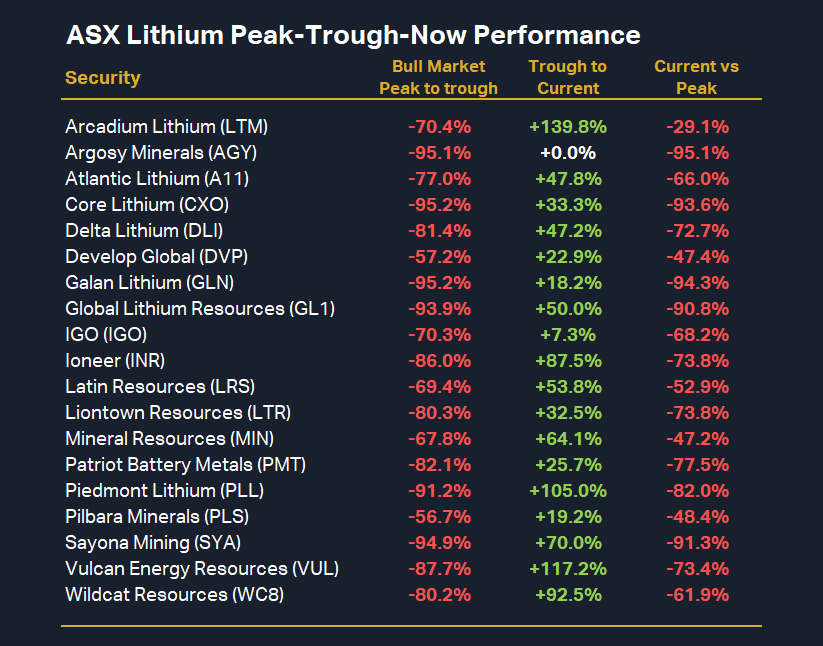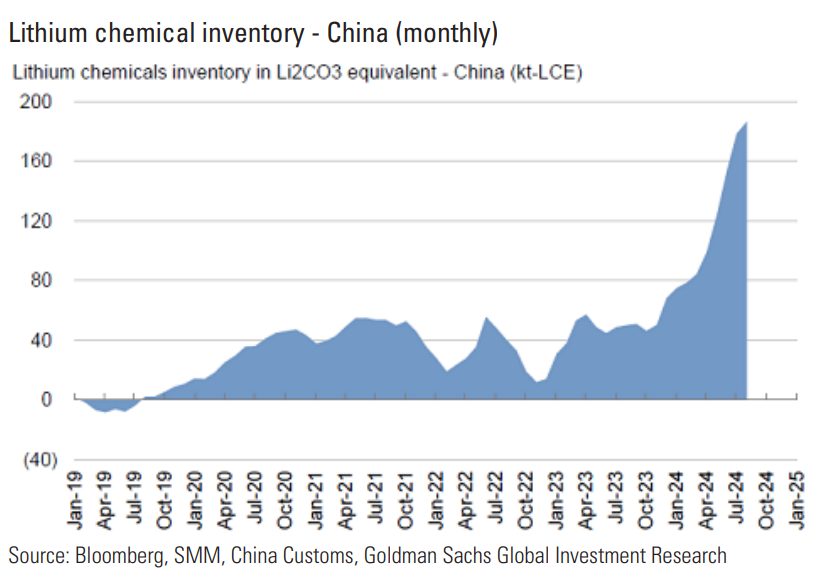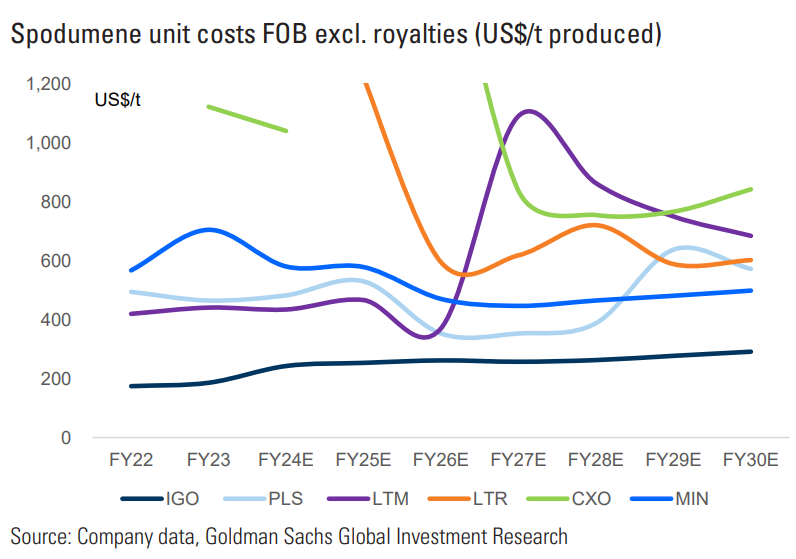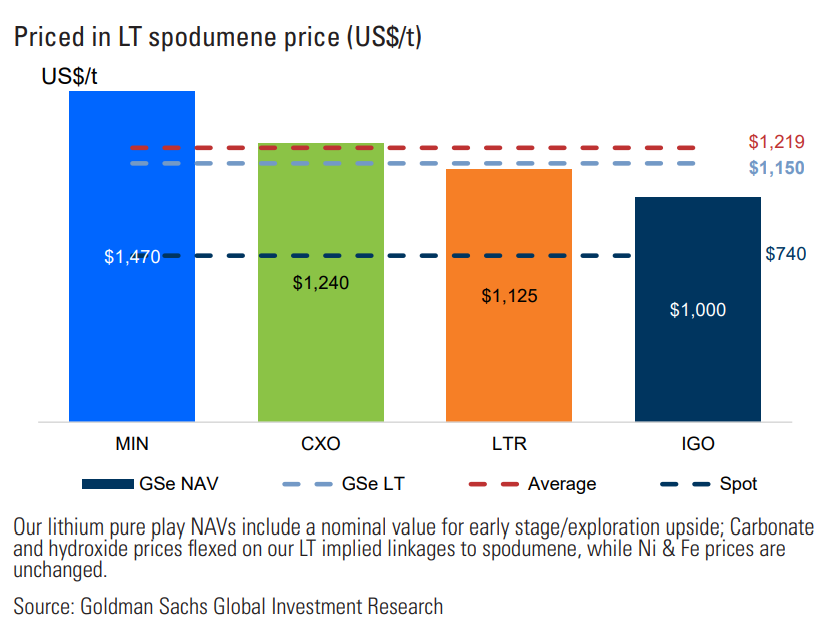Share prices of ASX lithium stocks have run too hard, except this one…
ASX lithium stocks have enjoyed a near-perfect storm of news drivers over the last few weeks. It started in August with Pilbara Minerals’ (ASX: PLS) takeover of Latin Resources (ASX: LRS). Shortly after, the world’s biggest manufacturer of EV batteries, China’s Contemporary Amperex Technology Co. (CATL), announced it had suspended production at its mainland lepidolite mines. Next, in late September, was the announcement of substantial stimulus measures for the Chinese economy and the promise of more to come. Finally, this week’s massive bid for Arcadium Lithium (ASX: LTM) by Rio Tinto (ASX: RIO).
Each event spurred share price gains in most stocks across the ASX lithium spectrum, with many reversing a previously unwavering slide that had sapped 80-90% of their market values since the 2022 peak. Blame it on good news, blame it on short covering (several stocks within the sector were heavily shorted prior to August), or blame it on the possibility that Aussie lithium stocks were just too darn cheap – the big question for investors now is should they hang on for more or take this opportunity to finally bail out?

Interestingly, while lithium stocks have been rallying, the prices of key lithium minerals have not matched the gains in stock prices, trading largely unchanged since the CATL news. For example, since that announcement, the benchmark November lithium carbonate futures contract on the Guangzhou Futures Exchange (GFEX) is up 3.7%, SMM lithium hydroxide is down 0.7%, and S&P Global Platts Australian Spodumene 6% is up 1.3%.
The big discrepancy between stock price gains and commodity price gains is a sticking point for major broker Goldman Sachs. The broker has considered the rally in stocks and suggests it might be “running ahead of commodity fundamentals”. In this article, we’ll investigate Goldman’s reasoning, as well as their views on what’s likely in store for lithium minerals prices and for ASX lithium stocks.
The commodity “fundamentals” stocks rally is ignoring
Goldman Sachs acknowledges CATL’s recent suspension of production at its Chinese lepidolite mines will reduce global lithium carbonate supply by around 4% for the rest of this year, assuming it is maintained as much as 5% next year. It is common for research analysts to talk in terms of lithium carbonate production because it is considered the lowest common denominator of the lithium minerals supply chain.

Despite CATL’s actions, Goldman Sachs still expects the global lithium carbonate market to remain in surplus through to next year – the main reason being the lack of cuts by other “more marginal” lithium producers and the fact that too many big lithium projects are “still ramping up” production. “We don’t see the lithium market moving meaningfully toward balance in the near-term”, says Goldman Sachs, and this is why the broker is forecasting pricing weakness until at least the end of next year.
As for lithium pricing specifics, Goldman Sachs now believes the global lithium carbonate cost curve (i.e. the industry’s marginal cost production) is US$9,000/t to US$10,000/t. This compares to the current lithium carbonate price of US$10,900/t and the recent low of US$10,200/t. This implies margins at marginal producers are slim, but they’re still positive – therefore continuing to incentivise supply.
Is RIO-LTM a unicorn, or is there more M&A ahead?
Goldman Sachs notes that prior to the RIO’s takeover of LTM, among the global mining majors, really only it and Glencore were actively looking into lithium. The rest of the majors “have shown less interest in lithium as a commodity”, the broker notes.
Still, Goldman thinks M&A activity may continue, but acquirers are more likely to come from the major global oil and gas producers. Here, the broker identifies Exxon, Schlumberger, Equinor, Occidental, and Saudi Aramco as energy companies that have recently shown a “growing interest” in lithium assets.
As for larger existing lithium players looking for acquisitions or merger opportunities within the industry, this is less likely considering most “do not appear to have the balance sheet strength for large scale acquisitions”, Goldman notes.
So, where can one find value in lithium stocks?
Goldman Sachs expresses its preference for “higher quality, longer-term developers (not impacted by near-term pricing volatility)”. There’s really only one standout ASX-listed lithium producer, opines the broker, singling out IGO (ASX: IGO) as the only positive free cash flow (FCF) stock in its lithium coverage on a 12-month view.

Goldman Sachs lauds IGO’s industry-leading low cost of production (for hard-rock assets). This largely insulates it from recent and future price volatility, and, as stated before, leaves it as the only positive FCF stock in the broker’s lithium coverage.

IGO is also the cheapest producer in its coverage based on current sector valuations. MIN’s valuation for example, can only be justified by a spodumene price of US$1,470 (compared to the spot price of US$740/t as per GS report but now at US$760/t). This compares to IGO’s US$1,000/t. Goldman’s “long term” spodumene price forecast is US$1,150/t. The average ASX-listed lithium stock is pricing US$1,219 at current share prices.
Goldman Sachs has a BUY rating on IGO and a 12-month forward price target of $6.40 which was increased from $6.35 in the broker’s latest research report. Based on IGO’s closing price of $5.45 on 10 October, this implies 17.4% upside.
This article first appeared on Market Index on Friday 11 October 2024.
5 topics
19 stocks mentioned

